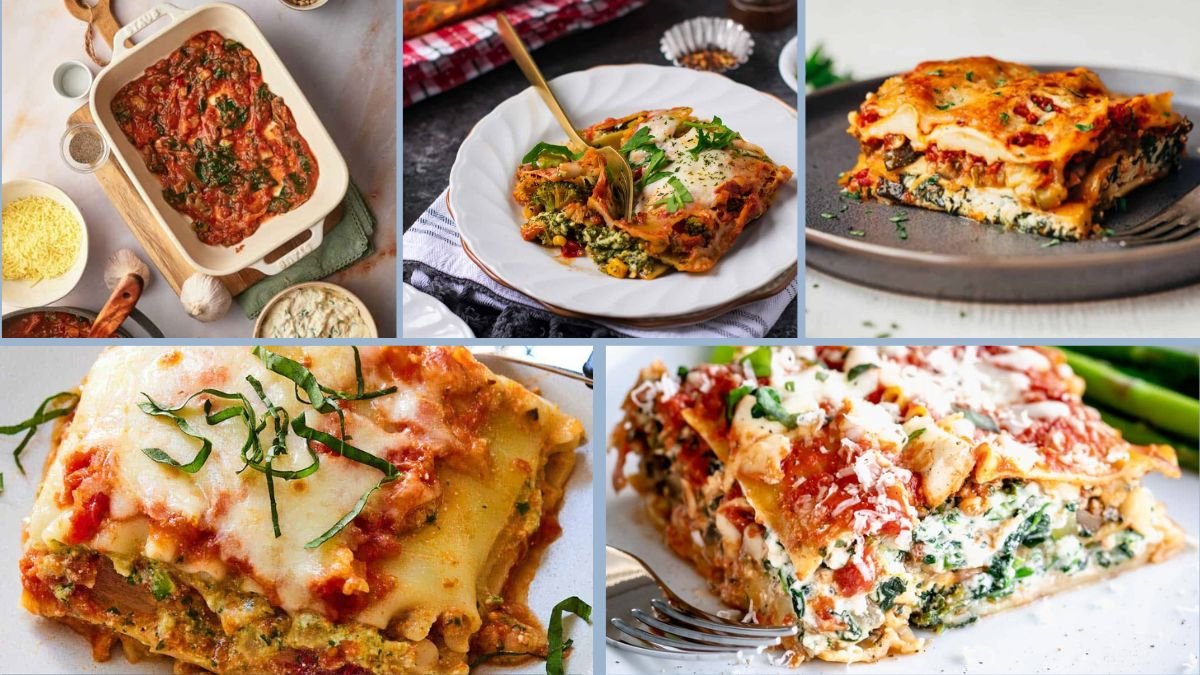Lasagna, a classic Italian dish, has long been admired for its rich layers of pasta, sauces, and cheese. On the other hand, Indian cuisine is celebrated for its bold spices, fresh vegetables, and aromatic curries. When the two meet, the result is a wholesome, comforting, and flavorful dish—Vegetable Lasagna with an Indian twist.
This fusion recipe preserves the essence of lasagna while replacing heavy meat sauces with a vibrant blend of Indian-spiced vegetables. The result is a dish that is hearty yet lighter, traditional yet inventive, and most importantly, 100% vegetarian. Perfect for family dinners, gatherings, or festive occasions, this lasagna offers something unique for both Italian and Indian food lovers.
In this article, we’ll break down the preparation into seven easy steps, ensuring that even beginners can master this fusion delight.
Step 1: Gathering Ingredients
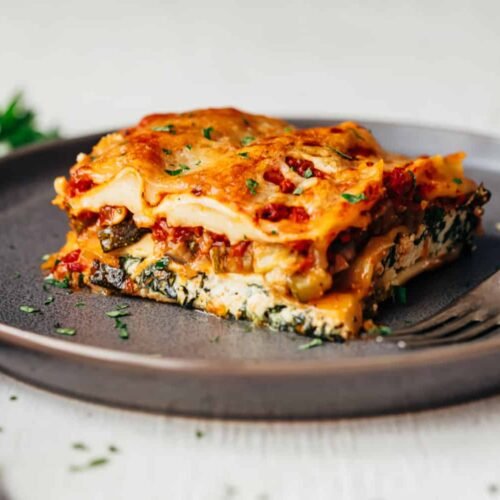
The foundation of a great lasagna lies in fresh, high-quality ingredients.
For the Vegetable Filling:
- Olive oil or sunflower oil: 2 tablespoons
- Onion: 1 large, finely chopped
- Garlic: 3–4 cloves, minced
- Mixed vegetables: 3–4 cups (carrot, capsicum, beans, corn, zucchini, peas, broccoli)
- Tomato puree: 2 cups
- Green chili: 1, finely chopped (optional for heat)
- Spices: cumin seeds (1 tsp), turmeric (½ tsp), coriander powder (1 tsp), garam masala (1 tsp), red chili powder (½ tsp), salt to taste
- Fresh coriander leaves: 2 tablespoons, chopped
For the White Sauce (Béchamel):
- Butter: 2 tablespoons
- Whole wheat flour or maida: 2 tablespoons
- Milk: 2 cups
- Black pepper powder: ½ teaspoon
- Nutmeg powder (optional): a pinch
- Salt: to taste
For Assembling:
- Lasagna sheets: 8–10 (whole wheat or regular)
- Grated mozzarella cheese: 2 cups
- Grated processed cheese or parmesan (optional): ½ cup
- Tomato ketchup or homemade pizza sauce: 2–3 tablespoons
Pro Tip: Using whole wheat pasta sheets and minimal butter makes this lasagna healthier without losing its comforting essence.
Step 2: Preparing the Vegetable Masala
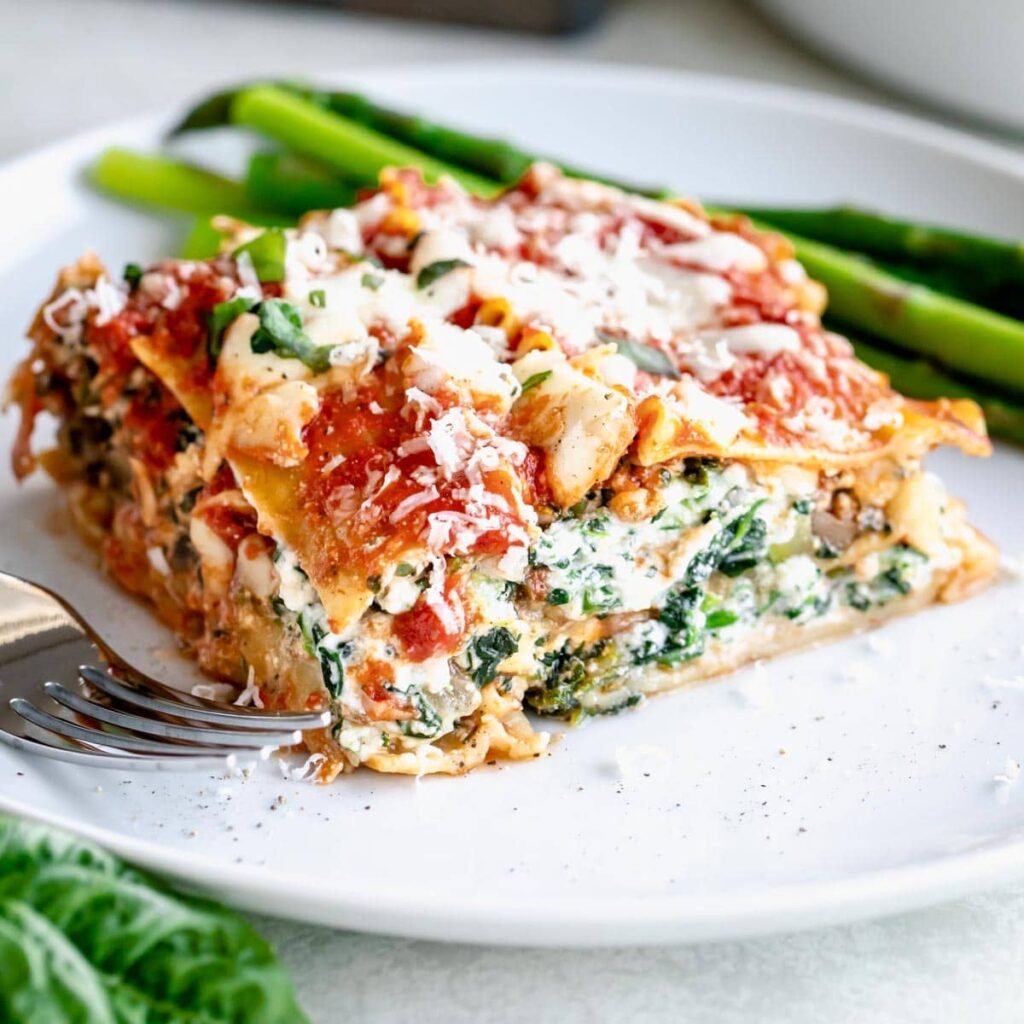
This step gives the lasagna its unique Indian character.
- Heat oil in a pan, add cumin seeds, and let them splutter.
- Add onions and sauté until golden brown.
- Stir in garlic and green chili, cooking until fragrant.
- Add chopped vegetables and stir-fry for 4–5 minutes.
- Add turmeric, coriander powder, red chili powder, garam masala, and salt. Mix well.
- Pour in tomato puree and cook until the masala thickens and releases oil.
- Sprinkle fresh coriander before turning off the flame.
Pro Tip: Keep vegetables slightly crunchy for texture—overcooking may make them mushy in the lasagna layers.
Step 3: Making the White Sauce (Béchamel)
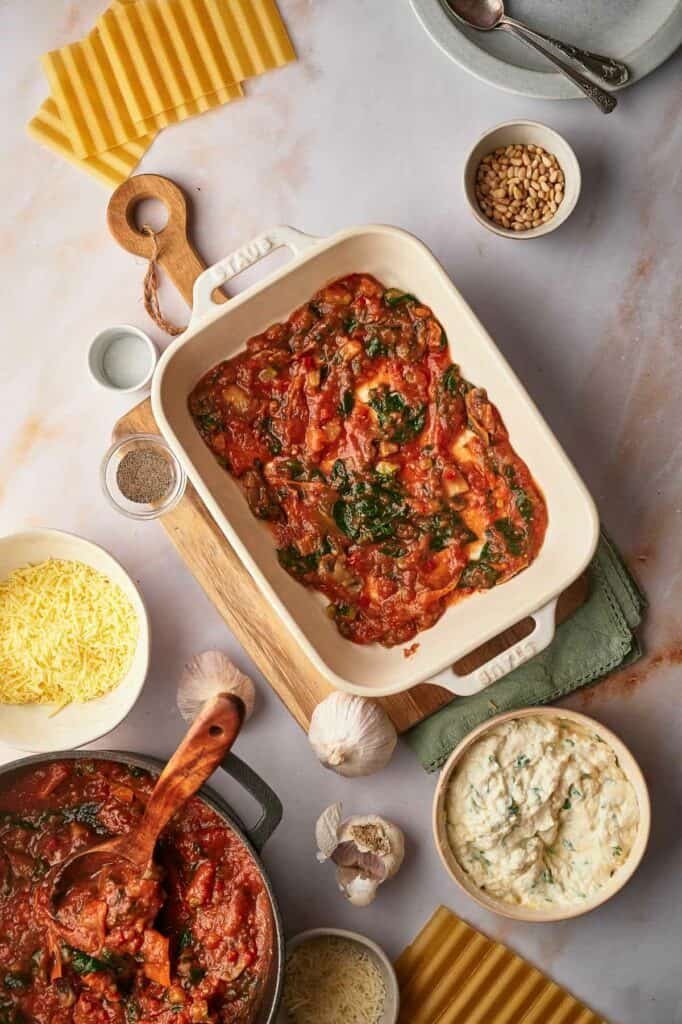
The creamy white sauce balances the spiced vegetable layer.
- Heat butter in a pan.
- Add flour and whisk continuously for 1–2 minutes until the raw smell disappears.
- Slowly pour in warm milk, whisking constantly to avoid lumps.
- Add salt, pepper, and a pinch of nutmeg for depth.
- Simmer until the sauce thickens to a smooth, creamy consistency.
Pro Tip: For a lighter version, reduce butter and substitute half the milk with vegetable stock.
Step 4: Pre-cooking the Lasagna Sheets
To ensure perfect texture, pasta sheets must be pre-cooked.
- Boil water in a large pot with 1 teaspoon salt and 1 teaspoon oil.
- Add lasagna sheets and cook until al dente (firm to bite).
- Drain and spread on a flat surface, brushing lightly with oil to prevent sticking.
Pro Tip: Some brands offer “oven-ready” sheets that don’t require pre-boiling. Always check packaging instructions.
Step 5: Layering the Lasagna
Layering is where the magic happens.
- Grease a baking dish lightly with oil or butter.
- Spread a thin layer of tomato sauce or ketchup at the base.
- Place lasagna sheets in a single layer.
- Spread a portion of vegetable masala evenly.
- Pour white sauce over the vegetables and sprinkle cheese.
- Repeat the layers until the dish is filled, ending with white sauce and cheese on top.
Pro Tip: Ensure even layers for a balanced flavor in every bite.
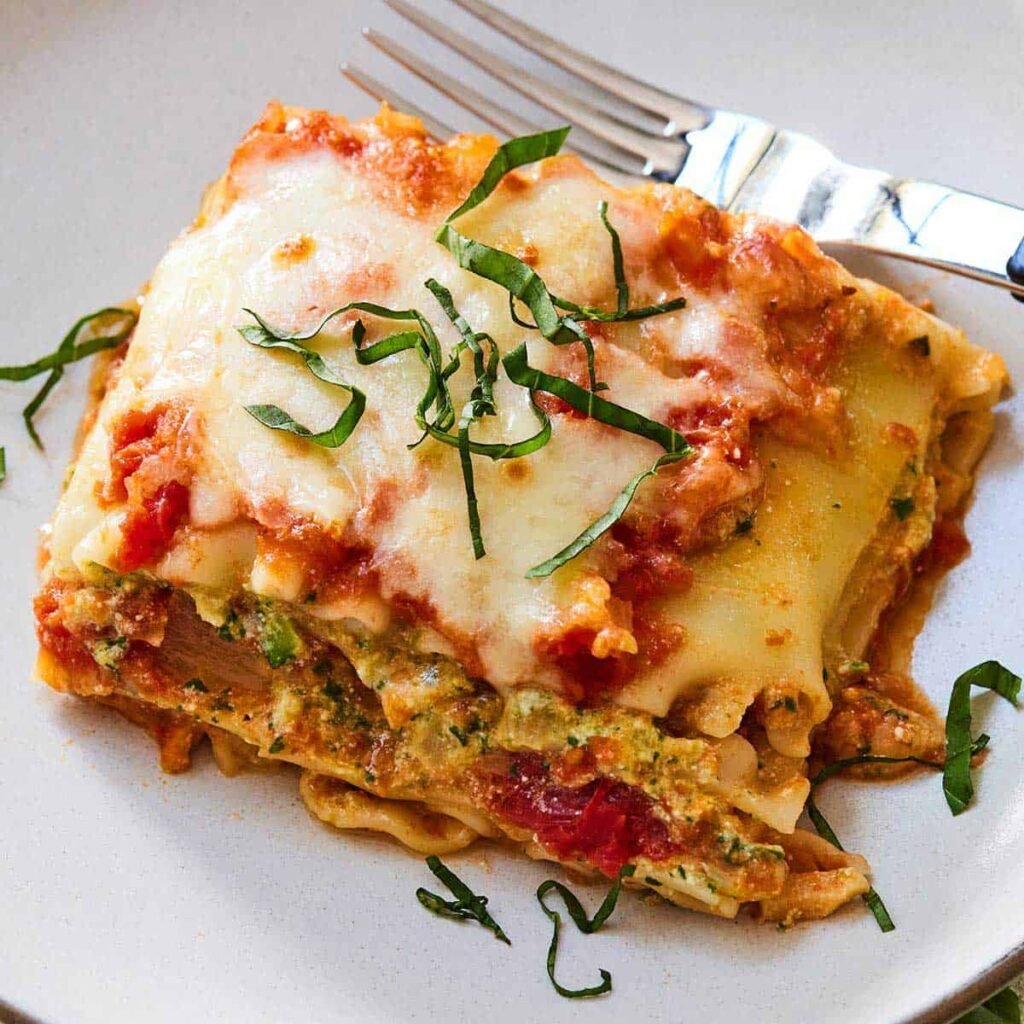
Step 6: Baking to Perfection
Baking brings all the elements together into a golden, cheesy delight.
- Preheat oven to 180°C (350°F).
- Cover the dish with foil (to prevent over-browning) and bake for 20 minutes.
- Remove foil and bake another 10–15 minutes until the top is golden and bubbling.
- Let it rest for 5–10 minutes before slicing—this helps the layers set.
Pro Tip: If you don’t have an oven, you can cook the lasagna on a stovetop by placing the dish in a heavy-bottomed pan with a lid and heating on low flame until cheese melts.
Step 7: Serving and Garnishing
Presentation matters almost as much as taste.
- Slice lasagna with a sharp knife to reveal neat layers.
- Garnish with fresh basil or coriander leaves.
- Serve hot with:
- A light green salad
- Garlic bread or roti for an Indo-Italian fusion meal
- A glass of buttermilk or lemon soda for freshness
Pro Tip: For festive occasions, drizzle extra cheese sauce or add a sprinkle of chili flakes and oregano on top before serving.
Nutritional Benefits of Vegetable Lasagna with Indian Flavors
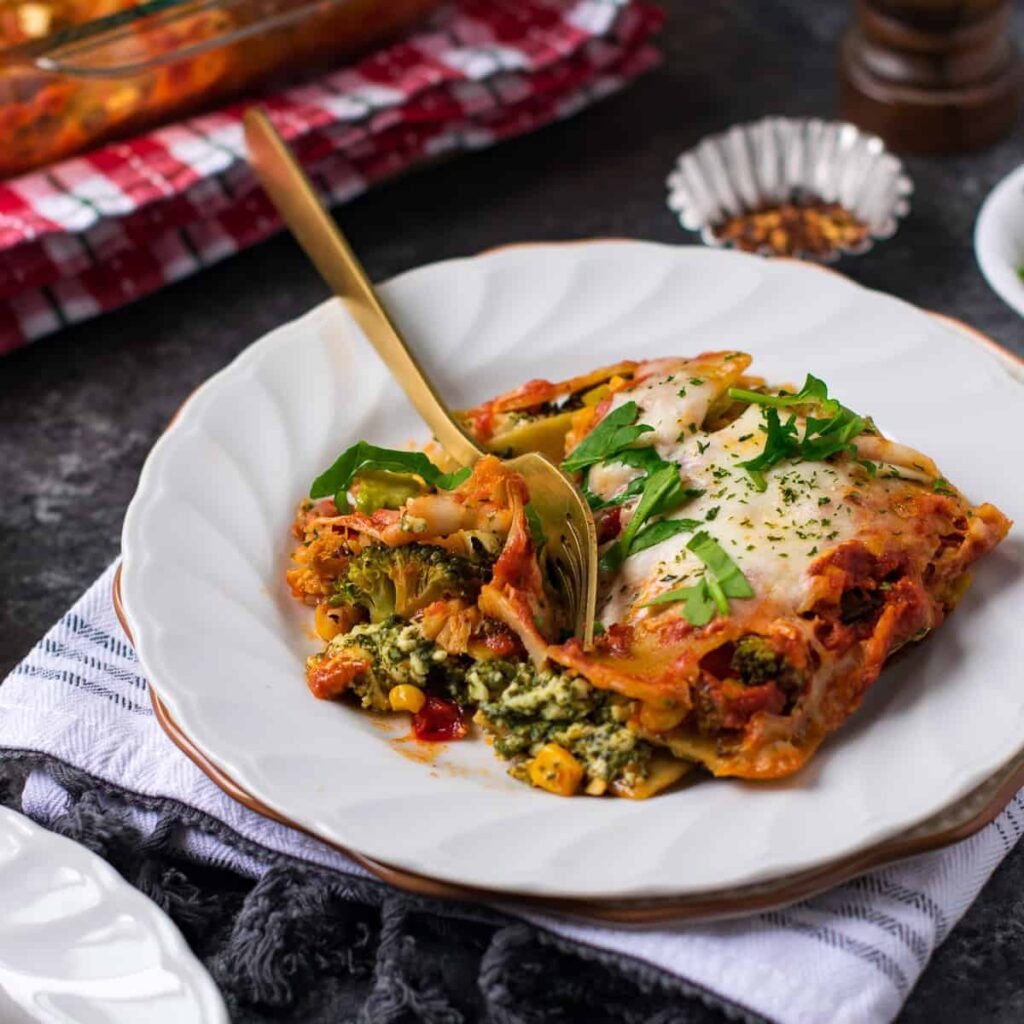
This fusion dish isn’t just indulgent—it’s also packed with nutrients:
- Vegetables: Provide vitamins, fiber, and antioxidants.
- Whole wheat pasta: Offers complex carbs for sustained energy.
- Cheese and milk: Supply calcium and protein.
- Spices: Turmeric, coriander, and chili aid digestion and immunity.
- Balanced Meal: Combines carbs, protein, and vegetables in one dish.
By controlling oil and butter, this lasagna can be enjoyed guilt-free as part of a healthy lifestyle.
Common Mistakes to Avoid
- Skipping pre-cooking pasta sheets: Leads to chewy or raw pasta.
- Overloading with cheese: Can make the dish too greasy.
- Watery vegetable masala: Makes layers soggy—always thicken before layering.
- Cutting too soon after baking: Resting is essential for neat slices.
- Uneven layering: Results in inconsistent flavor.
Conclusion
Vegetable lasagna with Indian flavors is more than just a dish—it’s a culinary dialogue between two cultures. By following these seven steps—gathering ingredients, preparing masala, making white sauce, pre-cooking pasta, layering, baking, and serving—you can create a wholesome, aromatic, and delightful meal at home.
It’s hearty enough to serve at parties, unique enough to impress guests, and nourishing enough to enjoy regularly with your family. Whether you’re a fan of Italian classics or Indian spice, this fusion dish delivers the best of both worlds in each comforting bite.
So the next time you crave lasagna, skip the meat-heavy versions and opt for this wholesome, vegetarian twist. You’ll discover that flavor knows no boundaries when Indian spices meet Italian elegance.
